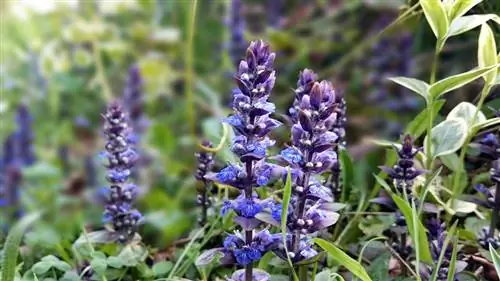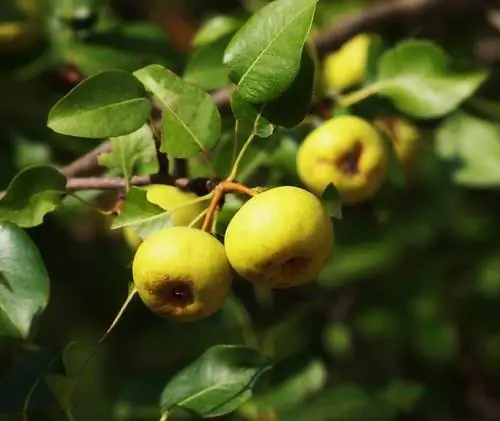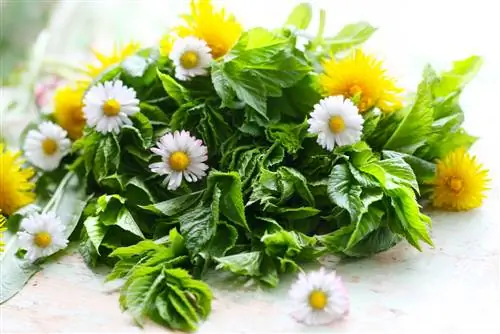- Author admin [email protected].
- Public 2023-12-16 16:46.
- Last modified 2025-01-23 11:20.
The Günsel (Ajuga) plant genus includes around 65 different species from the mint family. Günsel are everywhere in Europe. Widespread in Western Asia and to some extent North Africa. Many native species can be collected as wild herbs and used in the kitchen and/or are among the medicinal plants traditionally used in folk medicine.

Which Günsel species are edible and how do you use them?
Edible gunsel species are the creeping gunsel (Ajuga reptans), the pyramidal gunsel (Ajuga pyramidalis) and the yellow gunsel (Ajuga chamaepitys). The leaves, stems and flowers can be used fresh or cooked as a salad seasoning, in herb sauces, vegetable or egg dishes. The mild flowers are also suitable for sweet dishes and fruit salads.
Edible Günsel
Günseln that are edible or can be used as medicinal plants primarily include
- Yellow Günsel / Field Günsel (Ajuga chamaepitys)
- Pyramid Günsel (Ajuga pyramidalis)
- and the creeping gunsel (Ajuga reptans).
Yellow Günsel
The Yellow Günsel originally comes from the Mediterranean region, but has also been native to Germany for a long time. The strongly fragrant plant, which grows up to 15 centimeters high, is found primarily on calcareous soils, primarily in fields, and stands out due to its intense lemon-yellow flowers. The plant, also known as “shockweed,” was once used primarily to treat strokes. The Yellow Günsel is on the Red List of Endangered Species in Germany and should therefore not be collected.
Pyramid Günsel
In contrast to the creeping Günsel, the Pyramid Günsel does not form runners, but grows upright up to 35 centimeters in height. The blue to violet flowers appear between June and August, and the leaves also have a striking red-violet color. The plant is found primarily in the Alps, but also in the Caucasus and in the northern and southern European mountains. The plant, also known as stone foliage, is traditionally used as a medicinal plant for metabolic disorders and to promote wound healing.
Crawling Gunsel
Probably the best-known Günsel species is the Creeping Günsel, which is not only found very often in its wild form, but is also sometimes planted as a ground cover in some gardens. Both the leaves and the stems and flowers of the plant, which blooms between April and July, are edible and can also be used as a medicinal plant in the form of teas and infusions.
Using Günsel in the kitchen
The intense taste of the creeping gunsel is reminiscent of bitter chicory, which is why the herb should only be used in small quantities. Leaves and shoots can be used fresh as a salad seasoning or in herb sauces, but also boiled or steamed in vegetable, potato or egg dishes. The milder tasting flowers go well with sweet dishes or as a decoration for fruit salads.
Tip
Traditionally, the creeping Günsel is collected between May and June and then processed fresh or gently dried.






